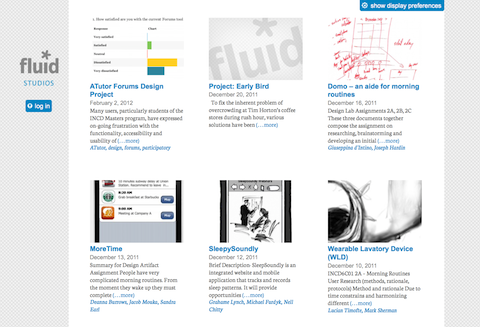Achieving Inclusive Education
Inclusive education or accessibility is achieved by a sufficiently diverse and flexible pool of OER to address the diversity of learners, as well as a way to find and deliver resources that address each learner’s individual needs.
OER can meet the legislative and policy commitments to accessible education by expanding the pool of resources to include derivatives that meet the needs of learners who cannot access the currently available resources and by designing resources that can be easily reconfigured. This will also make OER more accessible to learners who speak diverse languages, have diverse educational backgrounds, or have diverse cultural perspectives.
The Floe project is working with OER projects globally to create supports to enable the delivery of inclusive learning using OER.
Customization and personalization, and demands with matching
Open Educational Resources have the advantage of being “born-digital” and can therefore harness the potential mutability or plasticity of digital delivery systems and digital content to assist in addressing the diversity of learning needs. Unfortunately many of our resources are not designed to take advantage of this plasticity and constrain the flexibility needed to tailor the experience to diverse learners.
OER has the ingredients and foundational mechanisms to create the richly varied pool of resources needed to address the diverse needs of learners, thereby producing the variety of skills and knowledge needed in today’s reality. OER has tremendous potential to meet the needs of a growing group of un-served learners who experience disabilities. Serving this group of learners will also remove barriers to OER adoption.
OERs need to be inclusive in the following dimensions:
- Cognitive
- Technological
- Sensory
- Regional
- Dexterity
- Collaborative
Learning needs that affect learning can include:
- sensory, motor, cognitive, emotional and social constraints,
- individual learning styles and approaches,
- linguistic or cultural preferences,
- technical, financial or environmental constraints.
Figure 1: Floe concept design mindmap illustrates the many different ideas and parts which work together to enable a one-size-fits-one education.
To learn more, see the Inclusive Design Guide:
- Insight: Personal Discovery
- Practice: Design for Adaptability and Flexibility
- Practice: Design for Uncertainty
Benefit of openness
Open content allows for the remixing of content which allows for the creation of derivative content that makes the original materials more inclusive to the above dimensions. Open content enables:
- Creation/delivery/use/re-use/derivations/augmentations
- Innovative and relevant, fresh material
- Potential cost (and effort)-savings through sharing
- Depth of materials from multiple authors (additive approach)
- Content licenses that keep content alive and open CC-By Education
- Universities adopting open access policies COAPI
Floe’s approach helps further enable open content by making the process of sharing, modifying, and augmenting easier and more direct.
Strategy toward approaching matching/demand of content:
- No need to change content
- Tweaks and adjustments in presentation of content
- Supplementation of content
- Recreation of content
Achieving an accessible or inclusively designed OER system requires the capacity to match the learning needs of individual learners. This requires OER resources that are amenable to reuse, and a large, diverse pool of OERs. If the default OER is inaccessible to a specific learner the delivery system would either:
- transform the resource (e.g., through styling mechanisms),
- augment the resource (e.g., by adding captioning to video), or
- replace the resource with another resource that addresses the same learning goals but matches the learner’s specific access needs.
To achieve this requires:
- information about each learner’s access needs,
- information about the learner needs addressed by each resource,
- resources that are amenable to transformation, and a pool of alternative equivalent resources, and
- a method of matching learner needs with the appropriate learning experience
That is the work that Floe focuses on. To further understand what Floe is working on, visit the Floe Scenario narrative.
Figure 2: A screen capture of the Fluid Studios website.
To learn more, see the Inclusive Design Guide:
- Insight: User-Continued Design
- Practice: Work Openly

